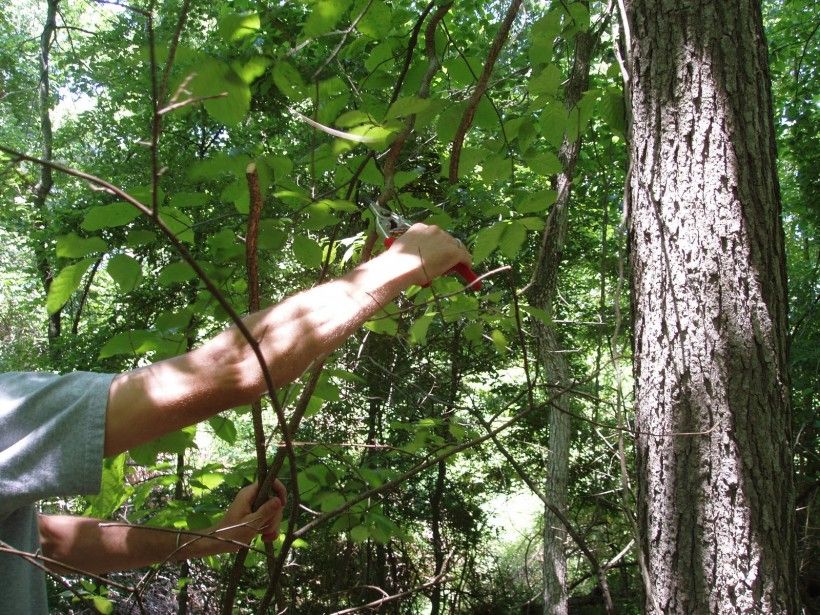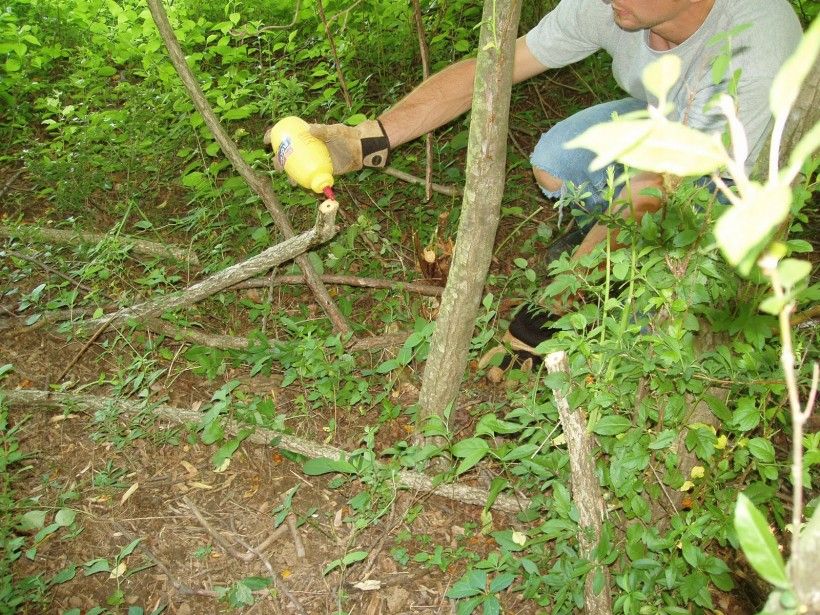More on Controlling Invasive Vines
In our prior post, we stressed the need for the control of invasive vines.
There are two vines that are abundant locally and which are threatening the health of our forests and native wildlife: oriental bittersweet and mile-a-minute. Both of these vines are exotic invasives that have little or no value to our resident wildlife and are out-competing our native plants. They both should be primary targets of control efforts.
But there is one vine found in our woodlands, often growing on trees, that should not be removed. Virginia Creeper is a native vine that has high value to wildlife. It provides shelter and structure for birds and small mammals and its berries are a critical food source for songbirds in the winter months. Though Virginia Creeper vines can grow quite large and sometimes choke trees, their importance to wildlife trumps any damage they may cause. Virgina Creeper is often confused with Poison Ivy. The definitive method of telling the difference between the two is the leaves: Poison Ivy has three leaflets while Virginia Creeper has five. Both of these vines are important to our local wildlife and should NOT be removed. Instead, focus your control efforts on the two invasive species pictured above.

